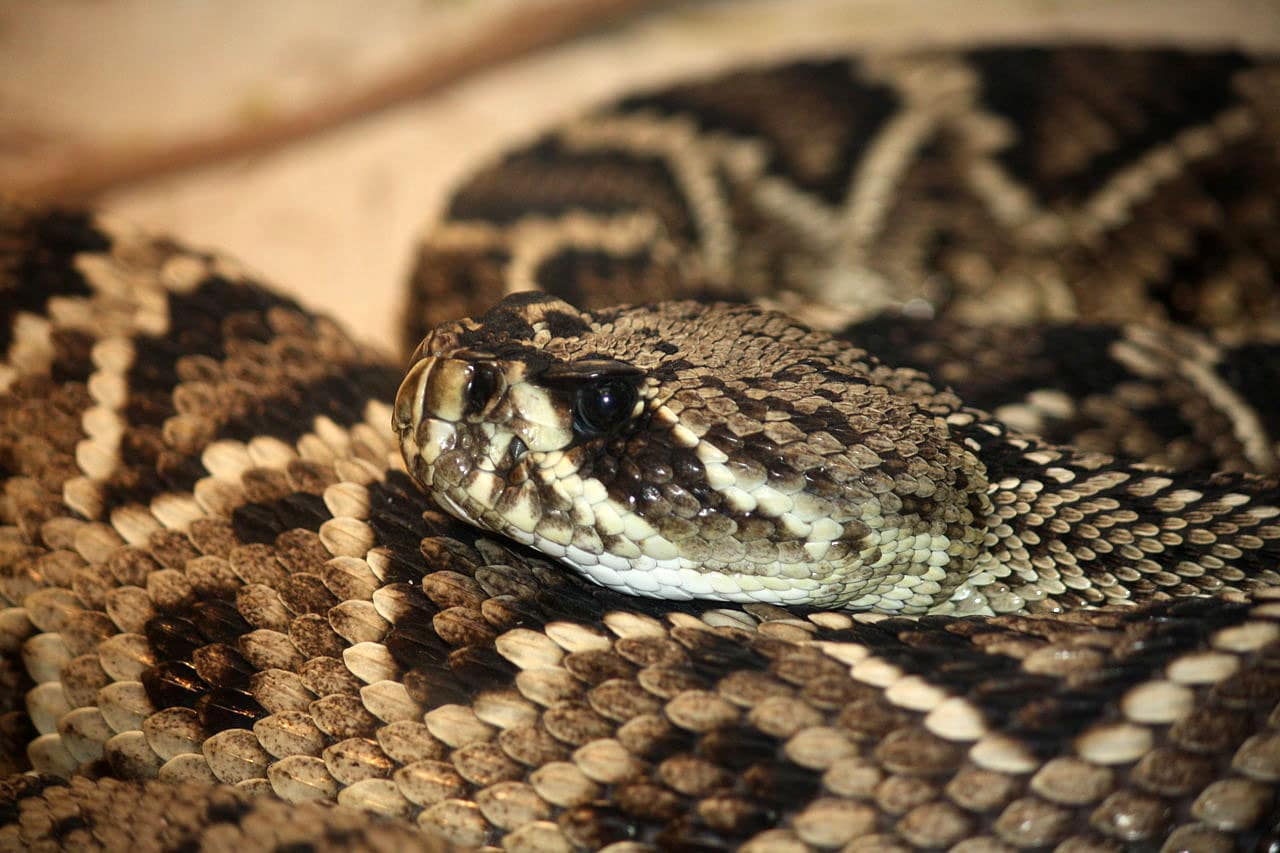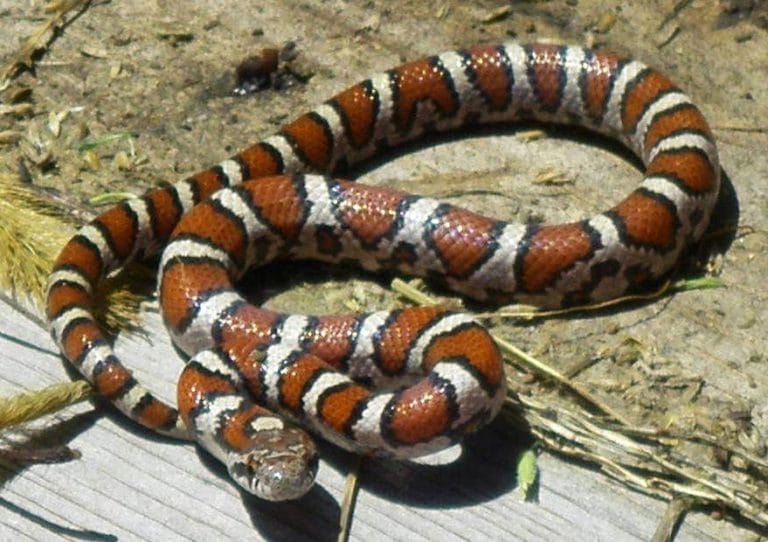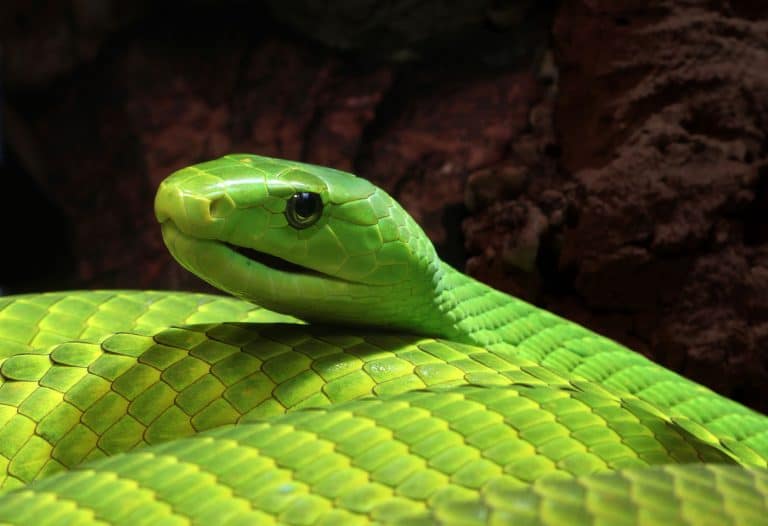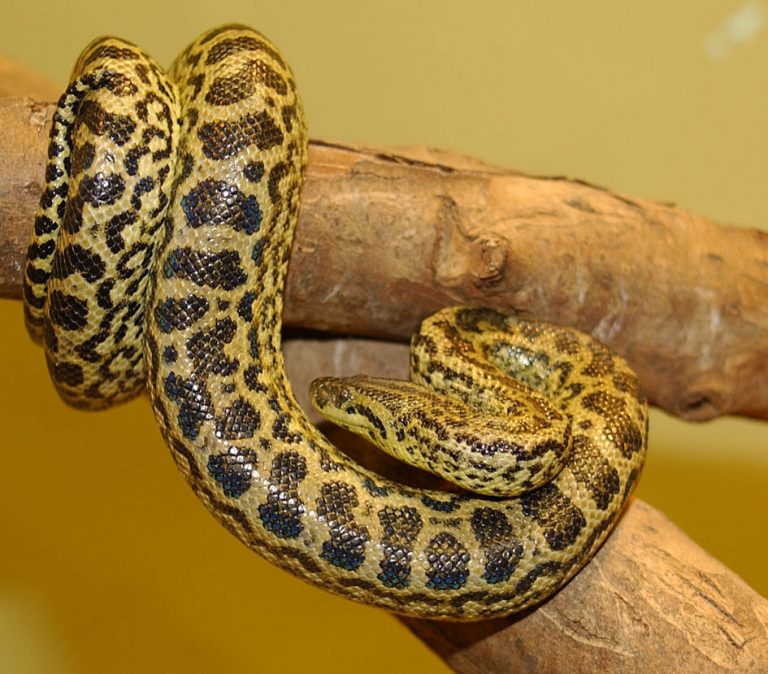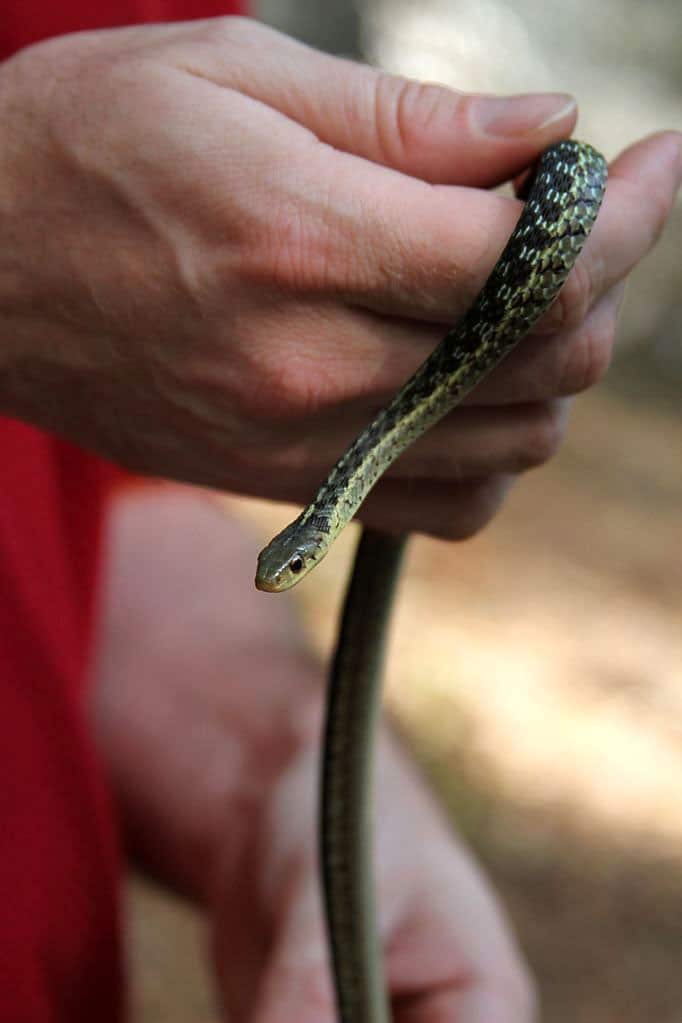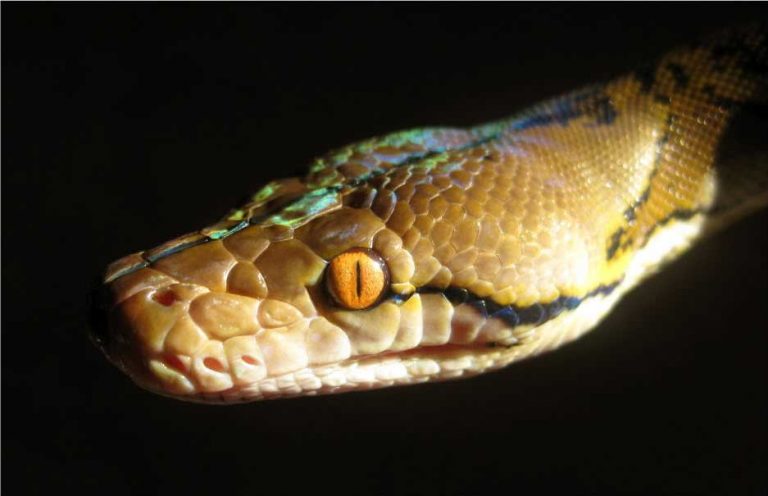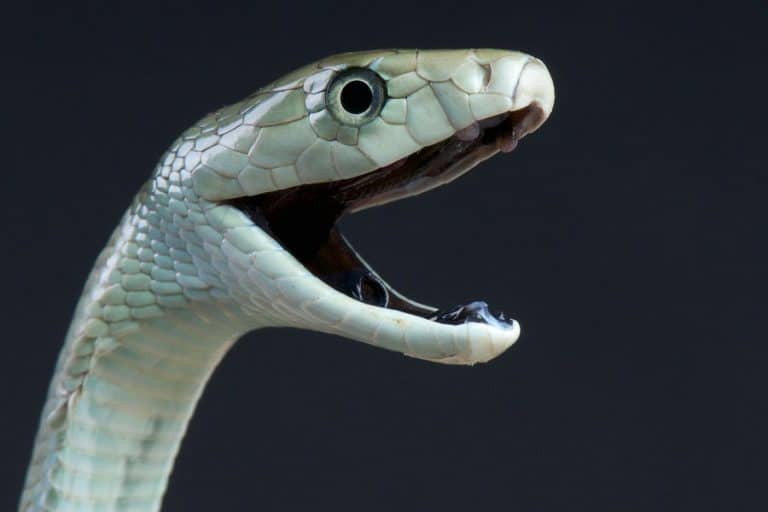Diamondback Rattlesnake
Scientific Classification
| Kingdom: | Animalia |
| Phylum: | Chordata |
| Subphylum: | Vertebrata |
| Class: | Reptilia |
| Order: | Squamata |
| Suborder: | Serpentes |
| Family: | Viperidae |
| Subfamily: | Crotalinae |
| Genus: | Crotalus |
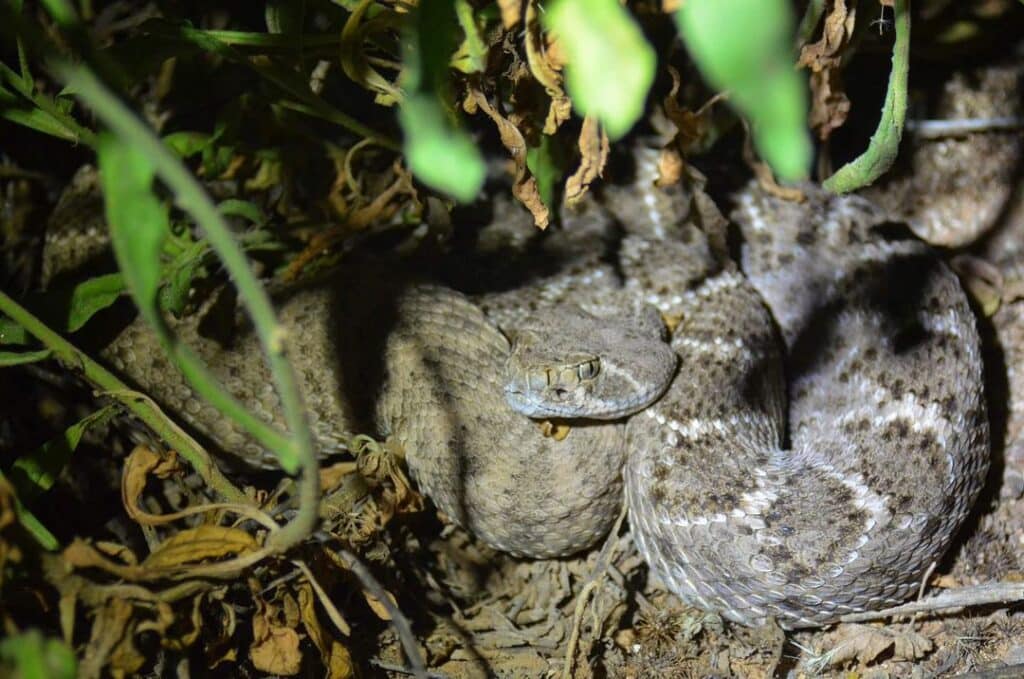
Crotalus, called diamondback rattlesnake is a variety of poisonous pit viper available only on the continent of America extending from southern Canada to northern Argentina. This snake earned its name from the Greek word Krotalon, meaning 2 tissues, producing necrosis and damaging practicable cells. Besides, the blood stops clotting and supports hemorrhaging all over the infected area. The other diamondback Rattlesnakes belonging to the Crotalus genus are:
Crotalus Atrox or the Western Diamondback Rattlesnake
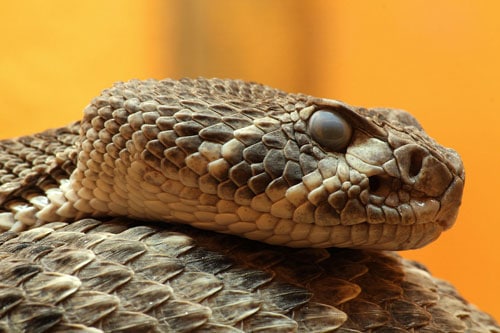
Crotalus Adamanteus or the Eastern Diamondback Rattlesnake
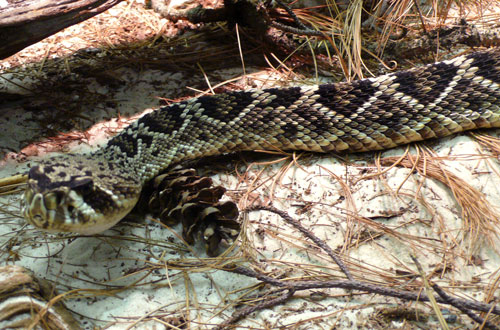
Crotalus Horridus or the Timber Rattlesnake
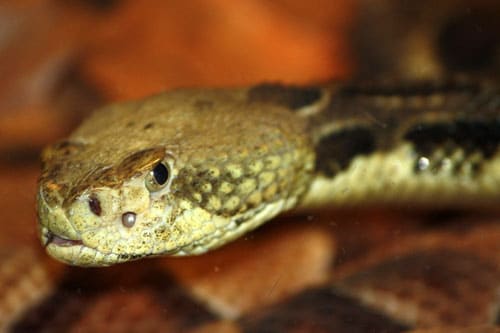
Crotalus Durissus is a venomous Pit Viper
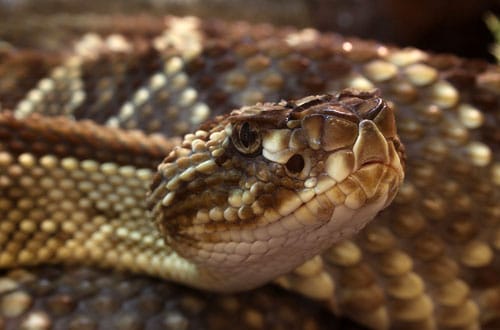
Crotalus Ruber is a venomous Pit Viper found in the US in California
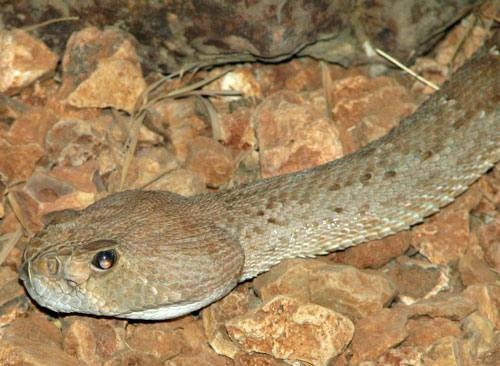
Crotalus Viridis
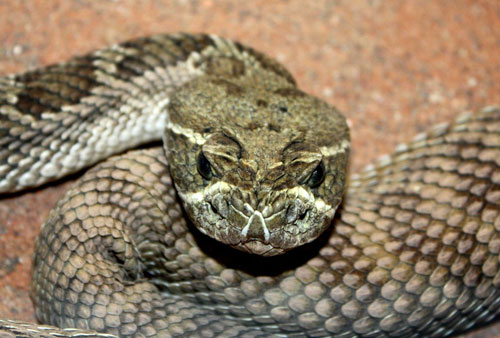
Crotalus Viridis (or prairie rattlesnake or Western Rattlesnake) is a highly venomous Pit Viper endemic to northern Mexico, southwestern Canada and the western US
Anatomy
Snakes belonging to this variety grow to lengths of 50 to 60 cm and even up to 150 cm.
In North America, Crotalus, or the diamondback rattlesnake is the biggest poisonous one. The length of pit viper snakes extends up to 8 feet. And it weighs up to 10 lbs. It is easy to identify a diamondback rattlesnake by its brown or black diamond designs over their body, bordered with a dull yellow shade. The rattle snake has an array of hollow sections at the tip of its tail, which symbolizes its name rattle, when it is given an energetic shake. In between the nostrils and the eyes they have a pair of pits that sense heat, which enables them to sense their prey when their sight is poor.
It is the hollow sections in the snake’s tail that creates a rattle. The snakes shed their skin, perhaps thrice a year. Every time it does, a fresh section of the tail grows. In time, these pieces of the rattle are subjected to rupture. As such, it is impossible to predict the age of a rattlesnake precisely by the rattle’s length. In the absence of predators, the diamondback rattlesnake survives about 20 years or more. Eastern diamondback rattlesnakes possess the lengthiest fangs when compared to other varieties of rattle snakes.
Behavior
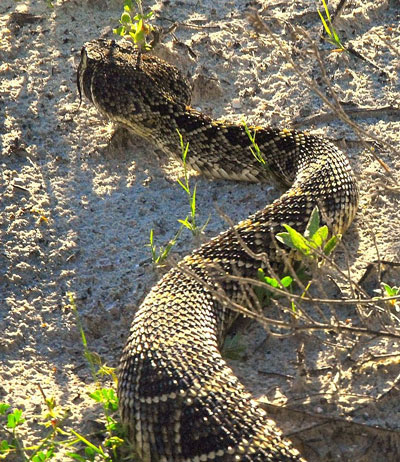
Regardless of their name, rattlesnakes do not act too violent, besides the rattle gives a caution and a signal of the forthcoming event. In case a diamondback rattlesnake is unable to escape from its predator, it curls up and waggles its tail. When the snake feels it is secure, it ceases giving caution.
This snake is the king among the rattlesnakes. This risky poisonous rattle snake moves somewhat slowly, still if it so desires, it speeds up. It usually moves stealthily and quietly along a straight path (rectilinear movement). When it is frightened or intimidated, it curls up, raises its neck and head in the shape of an S, threatening to strike. Diamondback rattlesnakes are able to swim. While swimming they normally raise their rattles and faces above the water.
A major portion of their lives, they live on the earth, but when necessary, the diamondback rattlesnake climbs upright on rough surfaces like tree trunks with ease. Besides, they swim well and are believed to inhabit some island belonging to the east coast of the United States of America.
Habitat
In the United States of America three varieties of the diamondback rattlesnake exist, and they spread over most of the southwest, western and southern states and a portion of Mexico. Rattlesnakes inhabit places where there is dense vegetation or a bush. This rattlesnake hunts by ambushing their prey for which they require enough space on the ground to pounce on the prey. They favor landscapes that are rocky and dry, but still we see them coiled below logs, and adjacent to uprooted trees.
As a Pet
Breeding
The breeding period of this diamondback rattlesnake is normally in the beginning of spring, and their babies emerge towards the end of August and the beginning of September. The number of babies in a litter is normally within 4 and 12, and at times 20. The hatchlings are 12 – 15 inches long.
Housing
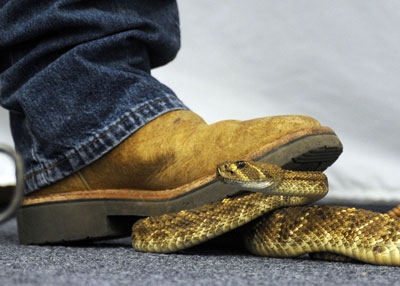
The primary requisite and the best suggestion for an enclosure is to ensure its safety by providing a system for locking and preventing its escape.
The ideal volume of an enclosure for a pair of rattlesnakes is 50 – 70 gallon. Provide a substrate that is dry, comprising of many layers of newspaper, aspen shavings towels or cypress shavings. Besides, keep the hindrances in vision and hideouts in the enclosure. A water bowl containing clean and pure water is an essential.
Illuminate the enclosure at day and maintain a proper temperature of 76 – 83F in the enclosure and at night lower the temperature to 70 degrees which is quite sufficient. In addition, facilitate them with a hot spot by placing a lamp to provide around 92 – 95 F for basking. In case your necessity is only a pet, keep your pet eastern diamondback rattlesnake agile throughout the winter in warmth. During winter they scarcely consume food. Suppose your intention is to breed them, remember they require a cool period of 90 days. (Not essential when dormant).
Food
Their main diet normally comprises of vertebrates, despite the fact that they also consume varieties of invertebrates. Tiny snakes consume lizards, whereas the bigger species initiate their food habits on lizards when they are young and then gradually turn to predating chiefly on mammals when they grow up. The usual food that they prey on consist of ground squirrels, chipmunks, rabbits, tree squirrels, gophers, prairie dogs, mice and rats. But the rattlesnakes rarely predate on snakes, birds and amphibians.
Eastern diamondback rattlesnakes have a liking for rodents and rabbits; still they feed on birds living on the ground. The majority of the captive snakes irrespective of a grownup or a hatchling, quickly favor rodents.
Feed your pet a suitable size of prey, a single meal once in every 7 to 10 days. In case you are keeping snakes together, then be extremely vigilant while you feed them, because while they are taking food there is a chance of their turning aggressive. Even though feeding your snakes with live prey is recommended, many keepers strongly suggest attracting the snakes by feeding them killed prey.
Handling
At present, purchasing this kind of a snake for a pet is impossible. There is nothing illegal in fetching one from the wild, but it would not be your cleverest decision.
Frequently rattle snakes rattle their tails, cautioning you: When you make movements they go away. Each time it bites you; more venom is injected into you. When it bites you again, it is double poisonous and the third bite, is thrice as bad. Thus, be extremely cautious. They never strike only once.
You can de-venomize a snake. It is done by a veterinary surgeon, but the bill comes up approximately $1,000. The saliva gland stores the venom. If the whole gland is not removed, it is possible to further produce venom. Also in case the whole gland is removed, then it is still hazardous. The snake is ignorant of the absence of venom, even then the snake possesses fangs with which it can pierce your hand all the way through or it pierces your eyeball or face or elsewhere when you attempt to hold it. There is nothing like a totally safe or a domesticated rattle snake.
At present if you possess one, which is not a good idea, bear in mind that this one is very treacherous. And poses acute danger to you. The western diamondback rattlesnake is the most spiteful and cruelest snake you can ever find. It is a very bad pet, is what many say. In case a rattlesnake bites you, go seek medical aid immediately. Try your best to remain cool, because the speed with which the venom enters your blood stream depends upon the speed with which your heart beats.

Having discovered a fondness for insects while pursuing her degree in Biology, Randi Jones was quite bugged to know that people usually dismissed these little creatures as “creepy-crawlies”.

